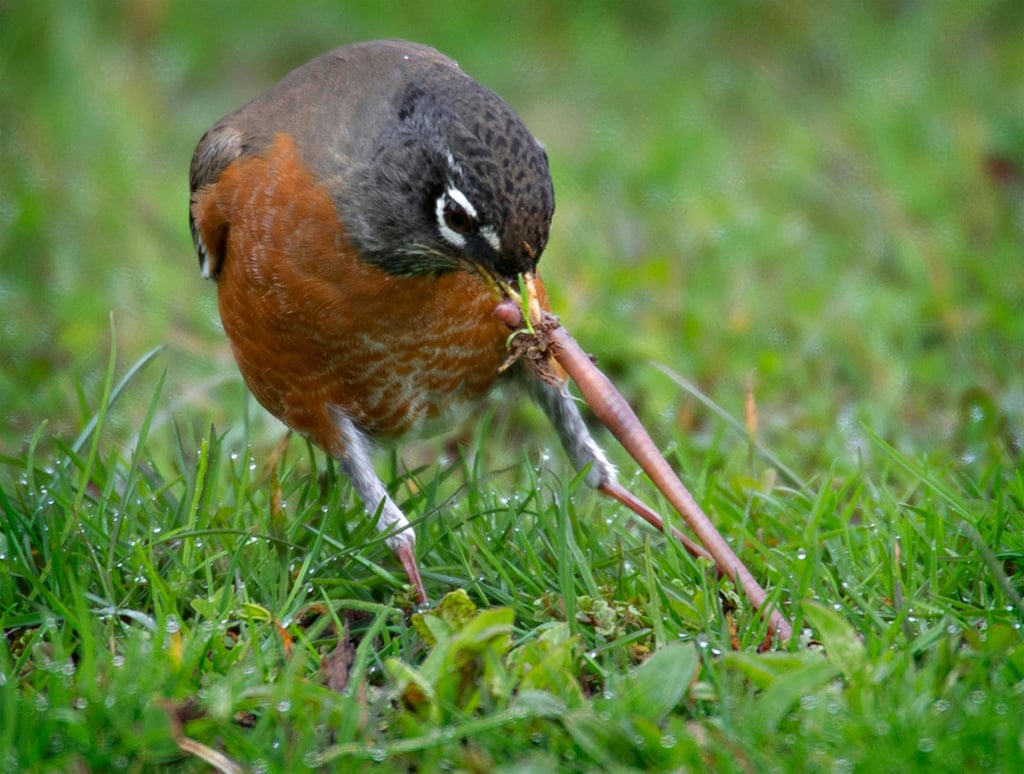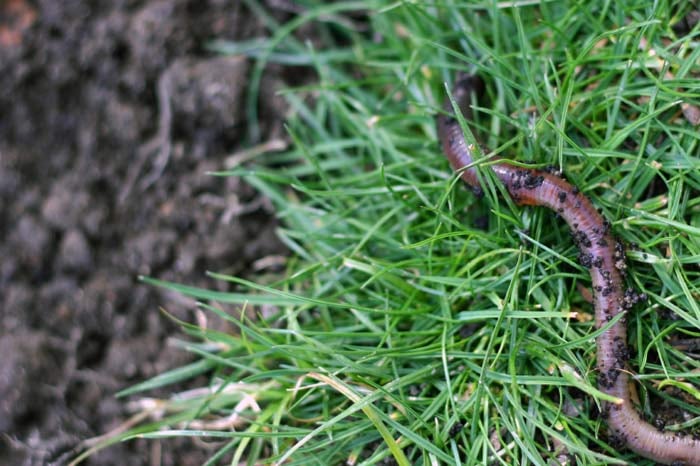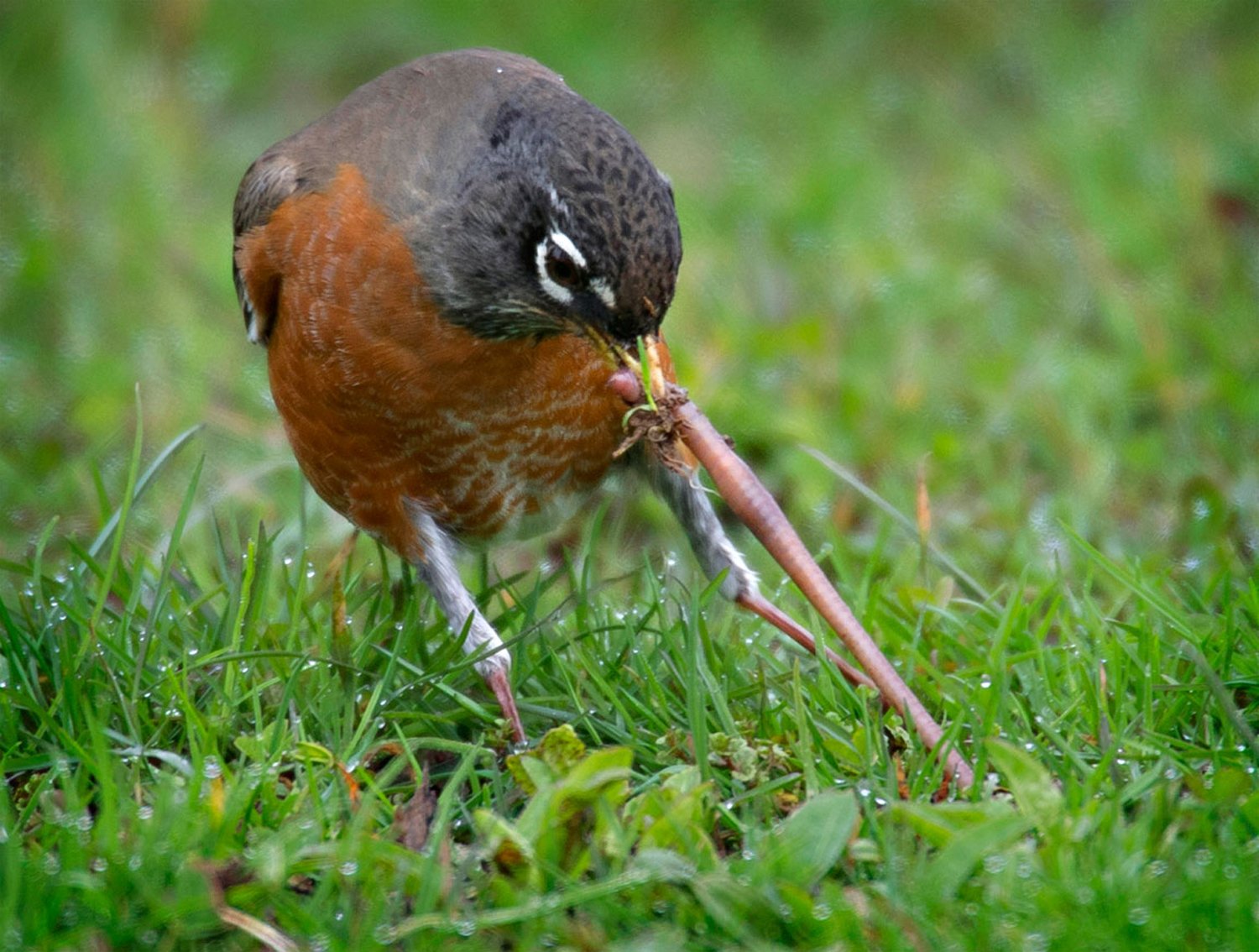
Earthworms are considered beneficial insects for lawns. They naturally aerate the soil, improve water penetration, assist in thatch control, and add organic matter among the many benefits.
Worms are often described as Mother Natures Plow. However, when extremely high populations of earthworms exist they can become undesirable. High populations may disrupt grass roots or create so much upturned castings on the surface as to smother low growing blades and create a bumpy surface.
Worms are also a major food source for birds and small rodents that can cause damage to the lawn while feeding.
Biology
Earthworms can vary in size, but the common night crawler is about six inches long, segmented, possesses barely visible hairs, and a smooth enlarged band (clitellum) about two inches from the front end. They don’t have eyes or ears but do sense heat, light and touch. Since the earthworm doesn’t have lungs or gills, it breathes through its skin. Heavy rains will cause worms to crawl to the surface to avoid drowning and become stranded on the sidewalks and driveways. These worms will die quickly due to ultraviolet light exposure and drying.
Worms move around by stretching out their front body and pushing through the soil. Then they pull their back parts up toward their front half so they aren’t stretched anymore. They begin to do this again. That is how they move from place to place.

Earthworms are hermaphrodites so each earthworm is both male and female and any two adult earthworms can mate. Mating tends to take place on or just below the soil surface and at night. Soil and air moisture must be adequate. Mating will occur during the spring and summer, or almost anytime that temperatures allow. Mated earthworms deposit fertilized eggs within a cocoon on or near the soil surface. Each cocoon will contain four or five eggs, but may contain more or fewer. The cocoons are oval and approximately 1/8 inch long., Eggs hatch in two to three weeks. Two to three cocoons may be produced in a year if conditions are good. Earthworms will mature in about one year and may live up to six years. Most of the complaints occur in late summer or early fall. During the winter, earthworms will migrate deeper in the soil.
Turf Damage Control
Earthworms do not like highly acid soils and reportedly do not inhabit soils below 4.5 pH. Some soil acidification with ammonium sulfate fertilizers may help reduce or discourage the earthworm populations.
Power raking or rolling of the lawn when castings are soft will help to even the soil. Regular applications of coarse textured topdressing materials like sand may help reduce their activity at the soil surface. It is hypothesized that since the cuticle (skin) of earthworms is remarkably sensitive, sand or other abrasive substances probably irritates and repels them. There are no synthetic control products registered for treatment against earthworms in home lawns.
If you think you have an earthworm problem, call your local Nutri-Lawn and we will come out and inspect your lawn and recommend further strategies for control or recovery.







